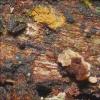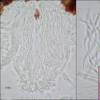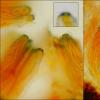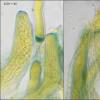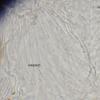
15-12-2025 21:11
 Hardware Tony
Hardware Tony
Small clavate hairs, negative croziers and IKI bb

15-12-2025 07:09
 Danny Newman
Danny Newman
indet. Rutstroemiaceae sp. on unk. fallen leavesMc

15-12-2025 15:54
 Johan Boonefaes
Johan Boonefaes
Unknown anamorph found on the ground in coastal sa

15-12-2025 15:48
 Danny Newman
Danny Newman
Melanospora cf. lagenaria on old, rotting, fallen

15-12-2025 07:05
 Danny Newman
Danny Newman
Pseudosclerococcum golindoi (det: Zotto)near Cosb

15-12-2025 11:49
 Danny Newman
Danny Newman
ITS sequences from the following two collections B

15-12-2025 12:34
 Danny Newman
Danny Newman
indet. Rhytismataceae on oak leafnear Purchase Roa

09-12-2025 12:06
 Andgelo Mombert
Andgelo Mombert
Bonjour,Je recherche l'article concernant Hypobryo
Apothecia inmersed, 0.4mm diameter. Hymenium light. Lobed margin. on hardwood.
Apex of paraphyses and asci are embedded in a gelatinous substance that keeps them together.
Asci 8-spored, 70-80 x 11-12um. With apical apparatus IKI visible (IKI +)
Spores cylindrical, up 72x2.7um, and 15 septa when mature. spirally arranged in the ascus.
Ectal Excipulo with prismatic texture (x3-6um), marginal cells 10-12 x 3-4um.
With the information that I have, I think it can be Karstenia, and as having apical apparatus: Karstenia guttulata.
I would like someone to confirm or reject this determination.
Greetings.
Susana

What I name rubrobrunnea-guttulata has straight spores. Yours are distinctly helicoid.
I fear I do not know this. You figure a detail auf the "excipulum", is it from the inner face of the marginal lobes? I suppose so, it is the periphyses that point horizontally to the hymenium.
Was it an attached branch?
Zotto
Photo excipulum take it in a bulk sample, no cutting, and I considered that was the excipulo. Now, I have noticed a cut and I could see that these terminal cells, are in contact with the hymenium, horizontally. (sent photo, although is not very good)
The branch that grew, was attached to the tree.
Susana

I must apologize, the right word is periphysoids, at least it is the term that Sherwood uses. In the dictionary periphysoids is used for pyrenomycetes, however, and also periphyses is there defined for perithecia, as elements lining the ostiolar canal and directed upwards. I am not really sure why Sherwood uses periphysoids here.
Zotto
Thanks for the info.
I can say that this is Karstenia sp. ? (undetermined)

As it was an attached branch, the whole tree was dead, or why you cannot say what host genus it was?
I checked the substrate. It was an attached dead branch. The whole tree is still alive, and it is a salix.
Regards

